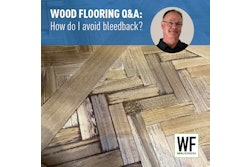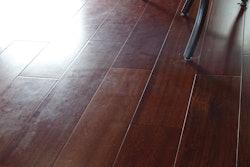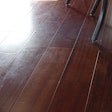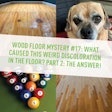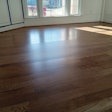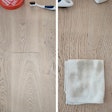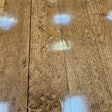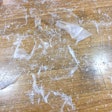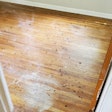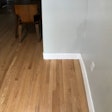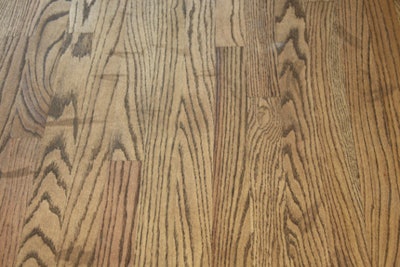
The Problem
I was called by a high-quality flooring contractor recently because in 24 years of doing wood floors, he had never seen marks like the ones that appeared on his latest stain job.
The Procedure
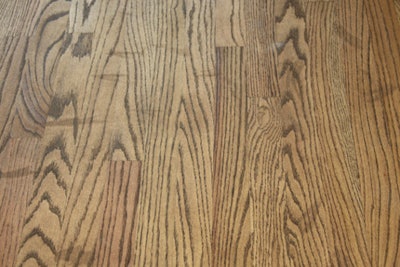 Click to enlarge
Click to enlarge
Red oak strip was installed on the second floor of a townhouse that was a stone’s throw from the ocean in southeastern Connecticut. The floor finishing took place at the end of May. The contractor had sanded the floor with a 60-grit belt at a 15-degree angle, then a 100-grit belt straight, followed by a multi-disc machine with 100-grit and 120-grit. Then an oil-based walnut was applied by hand.
Once the floor was stained, small darker marks appeared randomly throughout the floor. The contractor was perplexed and thought perhaps the marks were from his multi-disc sander.
The Cause
When I inspected the floor, I immediately noted that the marks varied in number per the room and the location of the room in the house. None of the marks appeared in the closets.
With my magnifying glass, I examined the scratch pattern from the abrasive on the floor. The areas with the marks had exactly the same scratch pattern as the rest of the floor, so the marks were not related to sanding.
At that point the case became more clear for me. I asked the contractor’s helper if he sweats a lot, because it seemed the location of the marks coincided with how hot the workers would have been as they were applying the stain and how sweaty their knee pads would have been:
• There were no marks in the closet, because they reached in.
• Two of the rooms that had been cooler during staining had fewer marks.
• One large room had a great deal of marks in one half of the room but none on the other half; they explained that halfway through the room they took a break to cool off and then started the second half.
It became obvious by this point that the workers had water-popped the floor with their sweat.
It became obvious by this point that the workers had water-popped the floor with their sweat. Water-popping a floor before staining raises the grain, opening it and causing it to absorb more stain for a darker floor.
How to Fix the Floor
They resanded the floor and this time when staining, they tried to keep cool and used rags under their knee pads to keep their sweat off the floor.
In the Future
Any time you do a stained floor you need to be even more careful than you are with a natural-colored floor, because stain highlights any differences in the sanding or the grain of the wood. One option to make the wood take stain more uniformly is to water-pop (which the crew did inadvertently on this job). If they had water-popped the entire floor to start with, the sweat marks might not have been a problem, but they would have had to choose a lighter stain to achieve the same color, since water-popping makes the stain appear darker, or choose an application method like buffing, which makes the stain appear lighter. A note about water-popping: Be careful to not crush the grain before stain is applied, or any crushed areas will appear lighter.














